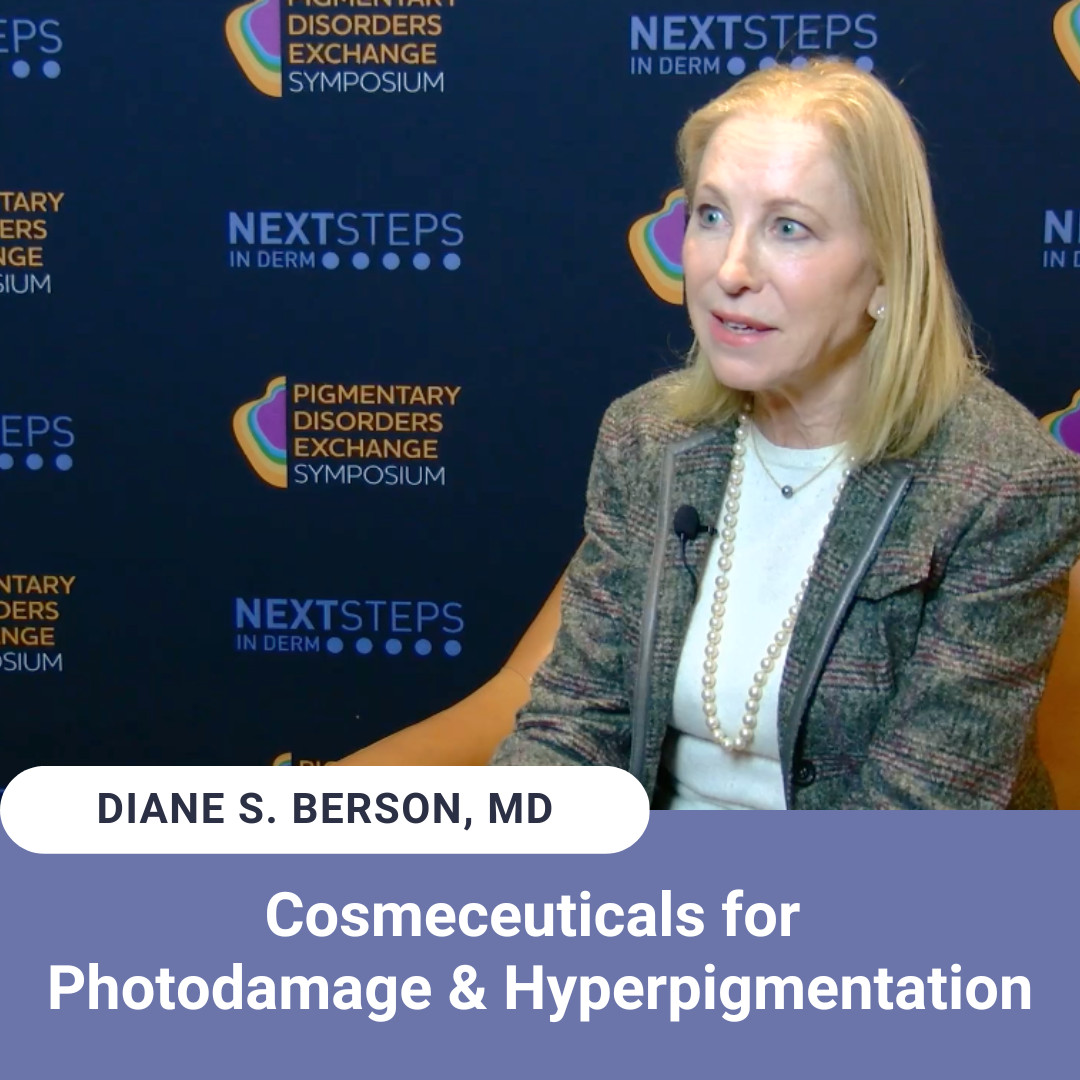Next Steps in Derm, in partnership with Pigmentary Disorders Exchange Symposium interviewed Dr. Diane S. Berson, associate professor of dermatology at Weill Cornell Medical College. Watch as Dr. Berson shares the cosmeceutical ingredients that dermatology clinicians can use synergistically to address photodamage and hyperpigmentation. Learn what ingredients are newly available and how cosmeceuticals can impact four mechanisms of action. Plus hear why iron oxide is an exciting new development in sun protection.
Further Reading
If you want to read more about cosmeceuticals for photodamage and hyperpigmentation, check out the following articles published in the Journal of Drugs in Dermatology:
Novel Vitamin C and E and Green Tea Polyphenols Combination Serum Improves Photoaged Facial Skin
ABSTRACT
Background: Skin aging is a multifactorial process induced by intrinsic factors such as metabolic processes and senescence as well as environmental factors, including smoking, air pollution, and solar radiation. UV-induced production of reactive oxygen species induces skin photoaging. Antioxidants, including vitamin C and E and green tea polyphenols represent a promising strategy for the aesthetic improvement of clinical features associated with aging.
Objective: To assess the safety, tolerability, and efficacy of a novel vitamin C and E and green tea polyphenols (CE-GTP) combination serum on photoaged facial skin.
Methods: 31 healthy females aged 43 to 65 years (mean age, 57.9) participated in this single-center, 12-week clinical trial. Subjects applied CE-GTP serum twice daily for the duration of the study. Clinical grading of efficacy parameters, safety and tolerability evaluations, ultrasound measurements, and self-assessment questionnaires were conducted at several study milestones.
Results: Statistically significant improvements were observed in all clinically graded efficacy parameters. Highlights include reduction in fine lines around the eye area and facial wrinkles and enhanced skin smoothness and radiance. Ultrasound measurements showed a statistically significant increase in skin density at week 12 compared with baseline, indicating thickening of the epidermal and dermal tissue, associated with youthful, healthier skin. Subjects self-reported numerous improvements, including reduction of fine lines and wrinkles, improved skin tone and texture, diminished look of dark spots, and improved skin elasticity.
Conclusion: Novel CE-GTP serum is safe and effective, as shown by statistically significant improvements in multiple aesthetically important objective, subjective, and patient reported outcomes.
Oral Tranexamic Acid for the Treatment of Melasma: A Case Series and Novel Dosing Regimen
ABSTRACT
Melasma is a common disorder affecting millions of people around the world. It is a condition that can disrupt one’s self-esteem and overall quality of life. Melasma is characterized by hyperpigmented macules and patches on the face. The pathophysiology of melasma is widely unknown, although multiple triggers have been identified. Among the triggers, sun exposure is considered to be the most important factor. A variety of topical treatments exist for melasma, however most of these options often lead to subpar results. Due to this, novel treatments such as oral tranexamic acid (TXA) have emerged. Our case series demonstrates the effectiveness and safety profile of utilizing oral TXA to treat recalcitrant melasma and highlights a possible dosing regimen that can be used for the novel therapy.
Did you enjoy this video interview? Find more here.

